Business model examples are the secrets that can make or break your entrepreneurial dreams. I’ve seen it firsthand, and let me tell you, it’s not just about having a great product or service.
It’s about how you package, sell, and keep the cash flowing. Without a solid business model, you’re just another fish in the sea struggling to stay afloat.
There’s a reason particular business model examples have become legendary—they work! There are no gimmicks or fluffy promises.
These strategies have been battle-tested and proven to catapult businesses from startups to success stories.
Profitable Business Model Examples for Entrepreneurs
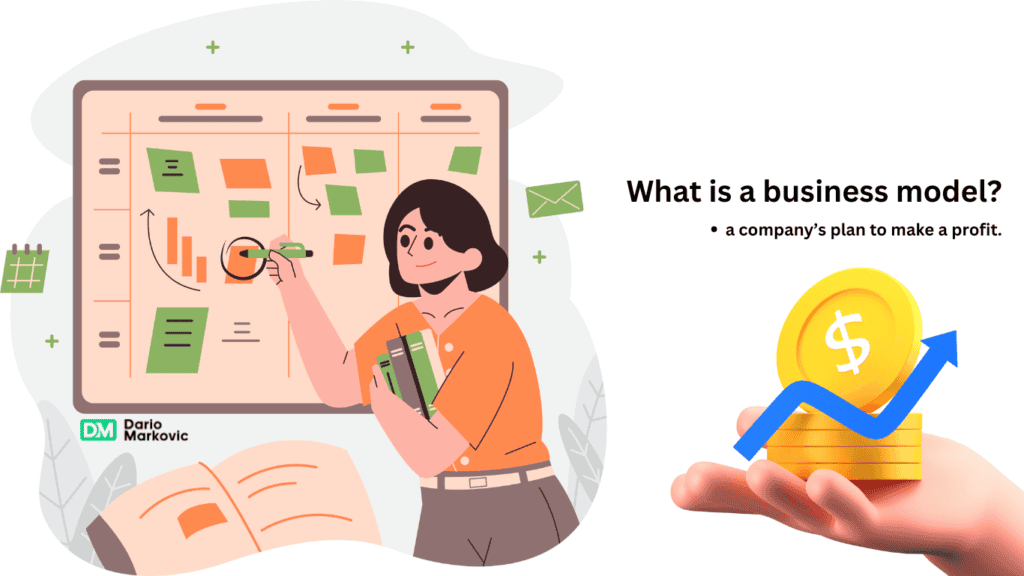
In my experience as an entrepreneur, I’ve seen how well-crafted business model types can be the difference between success and failure.
You can have a fantastic product or service, but you’re going nowhere fast without a clear delivery plan, revenue, and model type. Here are profitable business model examples:
Franchise Business Model
The franchise model is a business structure where a franchisor licenses its established brand, operational systems, and support to a franchisee in exchange for fees, including initial setup costs and ongoing royalties.
This arrangement allows franchisees to operate a business under the franchisor’s name while adhering to its guidelines and standards.
The model is effective because it enables rapid business expansion with reduced financial risk for the franchisor, who leverages the capital and effort of franchisees. Franchisees benefit from operating under a recognized brand, attracting customers, and reducing the startup risks associated with new businesses.
They receive comprehensive training, marketing support, and ongoing operational assistance, enhancing their chances of success.
Prominent examples of a franchise business include McDonald’s, which offers a globally recognized brand and standardized processes, and 7-Eleven, which provides extensive support and a proven business model.
This symbiotic relationship facilitates scalability, brand consistency, and local market penetration, making franchising a robust strategy for growth and sustainability.
Key Benefits
- Rapid expansion
- lower capital risk
- brand consistency
The Subscription Model
I’ve always been fascinated by the subscription business model. It’s a straightforward approach: offer a product or service on a regular schedule – monthly or annually – in exchange for a fixed fee.
Subscription-based services are all the rage these days. Companies like Netflix and Spotify have nailed the model, delivering fresh content to customers while enjoying a predictable revenue stream.
To replicate their success in these business model examples, it’s crucial to consistently provide high-quality products or services that keep customers hooked and willing to open their wallets month after month.
Key Benefits
- predictable recurring revenue
- high customer retention
- long-term relationships
The Freemium Model
A particularly potent approach is the freemium model, which has proven to be a game-changer for many software companies. This model lets users try the product for free, with the option to upgrade to a premium version packed with advanced features for a fee.
This model offers a basic product or service for free, while charging for premium features or advanced functionality. It’s common in software and online services, where users can use a limited version for free and then upgrade for additional features or capabilities. Examples include Dropbox and Spotify.
Dropbox is a prime example of the freemium model in action. Offering a generous amount of free storage attracts a large user base and converts a percentage of those users into paying customers. The key is to strike the right balance between providing enough value in the free version to attract users and offering compelling reasons to upgrade.
Key Benefits
- large user base
- easy conversion to paying customers
- low barrier to entry
The On-Demand Service Model
The on-demand service model has exploded in recent years thanks to companies like Uber, Airbnb, and DoorDash. This model leverages technology to connect customers with service providers in real time, offering convenience and flexibility.
The On-Demand Service Model refers to a business model where services or products are provided to customers immediately upon request, rather than being pre-produced or stocked. This model is common in industries like ride-sharing (e.g., Uber), food delivery, and streaming services. It operates on the principle of fulfilling customer needs in real-time, usually through digital platforms or apps.
Key Benefits
- provides instant access to services
- meet demand without significant upfront investment
- reduces costs associated with maintaining large inventories or full-time staff
The Consumer-to-Consumer (C2C) Model
The beauty of the consumer-to-consumer model lies in its simplicity. Individuals can easily buy and sell goods directly with one another, with online platforms like eBay and Etsy providing a hassle-free connection.
The Consumer-to-Consumer (C2C) model is a type of business model where transactions occur directly between consumers, typically facilitated by a third-party platform. Examples include eBay, Craigslist, and peer-to-peer marketplaces like Airbnb.
I’ve had the privilege of witnessing entrepreneurs build thriving online communities by zeroing in on specific niches. The secret to their success lies in fostering a sense of trust among users, establishing secure payment systems, and consistently attracting new buyers and sellers to their platforms.
Key Benefits
- consumers can connect with buyers or sellers globally
- no need for maintaining inventory or large physical infrastructure
- ratings and reviews help build trust among users
The Marketplace Model
In a marketplace model, the focus shifts to business-to-consumer transactions, where buyers and sellers meet. Think of it like walking into a massive store like Amazon, where products from numerous sellers are at your fingertips.
This model brings buyers and sellers together on a platform where transactions occur. The marketplace operator typically charges a fee or commission for facilitating these transactions. Examples include Amazon (connecting buyers and sellers of various goods) and Airbnb (connecting hosts with guests for accommodations).
To stand out, entrepreneurs can carve out a niche – think handmade goods or eco-friendly products – and carefully curate a selection that buyers and sellers can trust. It’s about building strong relationships, streamlining logistics, and constantly improving the user experience.
Key Benefits
- Scalable
- earns commissions on transactions
- low inventory risk
The Razor Blade Business Model
Imagine a business model where you sell a core product at a steal and then rake in the profits from the complementary goods that come with it. This is exactly what Gillette did with its razors and razor blades—selling the handles at a low price and making up for it with ongoing razor blade business sales.
The Razor Blade Business Model is a strategy where a company sells a primary product at a low price (or even at a loss) to drive sales of a complementary, recurring product that has a higher profit margin. The name comes from the practice of selling razors cheaply while making money from the ongoing sale of replacement blades.
Razor and blade business model have emerged in various industries, such as printers and ink, coffee makers, and pods. The trick is to craft a top-notch core product that prompts customers to return for more extras.
Key Benefits
- initial low-cost product
- recurring revenue
- customer loyalty
The Affiliate Marketing Model
Imagine promoting and getting paid for products or services you love to your audience. That’s the idea behind affiliate marketing: businesses reward affiliates with a commission for each customer or sale generated through their referral link. It’s a popular approach among bloggers, influencers, and content creators.
The Affiliate Marketing Model is a performance-based strategy where businesses reward affiliates (partners) for driving traffic or sales through their marketing efforts. Affiliates promote a company’s products or services on their platforms, such as blogs, social media, or websites, and earn a commission for every sale or lead generated through their referral links.
Many entrepreneurs have cracked the code to affiliate business success by crafting resonated content, building trust with their audience, and promoting products that fit their niche like a glove. To replicate their success, focus on selecting top-notch products, being transparent about your affiliations, and continually delivering value to your followers.
Key Benefits
- businesses pay only for actual sales or leads
- allows for a broad reach without a large marketing budget
- reduces the need for extensive in-house marketing efforts
The Pay-Per-Use Model
Customers are billed according to their product or service usage in the pay-per-use model. Utility companies often use this approach, charging customers for the precise amount of electricity or water they consume.
In this model, customers pay only for the specific services or resources they use. It’s often used in industries like cloud computing (where users pay for storage or processing power used), utilities (where you pay for water or electricity based on consumption), and software (where users pay based on the number of users or features utilized).
In innovative industries, I’ve seen creative applications of this model. Car-sharing services, for instance, charge by the minute, while cloud computing platforms base their fees on storage or bandwidth usage. The common thread is a clear pricing structure, precise tracking, and the ability to adapt to demand.
Key Benefits
- customers only pay for what they actually use, leading to potentially lower costs compared to flat-rate pricing
- scales well with customer needs, as users can increase or decrease their usage without changing their overall pricing structure
- appeals to customers who want to avoid paying for features or services they don’t use
Retailer Model
The retailer model involves buying products from manufacturers or wholesalers and implementing direct sales to consumers through physical stores, online platforms, or both.
This model is effective because it allows retailers to directly interact with customers, understand their preferences, and provide a curated shopping experience.
This is the traditional retail business model examples for entrepreneurs where a retailer buys products from wholesalers or manufacturers and sells them to consumers at a markup. The retailer is responsible for inventory management, marketing, sales, and customer service. Examples include Walmart, Target, and local shops.
Successful examples include Walmart, known for its vast product range and competitive prices, and Amazon, renowned for its convenient online shopping and fast delivery.
The retailer model meets consumer demand, quickly adapts to market trends, and optimizes inventory and customer service. Learn how to calculate inventory to maximize the retailer model.
Key Benefits
- retailers manage the entire sales process, allowing for control over how products are marketed and sold
- build strong customer relationships through personalized service, loyalty programs, and in-store experiences
- offer a wide range of products, catering to different customer needs and preferences
Fee-For-Service Business Model
The fee-for-service business model involves charging customers for each specific service provided. It’s effective because businesses earn money directly from their services, and customers only pay for what they need.
In this model, customers pay a fee for each specific service provided to them. It’s often used in professional services such as consulting, legal services, healthcare (where services like consultations or procedures are billed separately), and various B2B services.
Examples include consulting firms like McKinsey, which charge for advice and projects, and medical practices, where patients pay per visit or procedure. This model ensures steady revenue, high service quality, and flexible pricing.
Key Benefits
- services are billed individually, providing a steady and predictable revenue stream based on the number of clients and services rendered
- tailor services to meet specific client needs, often justifying higher fees
- position yourself as experts, which can command higher fees and attract premium clients
Understanding the Components of a Business Model
Think of a business model as a formula for success. It outlines how a company will produce and distribute its products or services, identifies its ideal customer base, and establishes a path for revenue growth.
If you’re an entrepreneur, you know a business idea is just the starting point. The real challenge lies in turning that idea into a profitable venture. That’s where your business model comes in – the roadmap guides you from concept to reality.
Business Model vs. Business Plan
One common misconception is that business models and plans are the same. While they’re certainly related, they serve different purposes.
A company’s chosen business model examples serve as a blueprint, outlining how the organization will function. In contrast, a business plan is a more comprehensive document that outlines the specifics of implementing that model, including financial projections and operational strategies.
Building a successful business requires a clear roadmap, and that’s where your business model and business plan come in. Think of your business model as a bird’ s-eye view of your company, while your business plans are the step-by-step guide to making it a reality.
Benefits of Building a Business Model
So why bother creating one of the business model examples? In my experience, there are several key benefits:
-
- Clarity: A well-defined business model helps you clarify your value proposition, target market, and revenue streams. It forces you to think through the key aspects of your business and how they fit together.
- Focus: Outlining your business model will help you prioritize your resources and efforts better. You’ll understand where to focus your time and energy to drive the most impact.
- Communication: A business model is a powerful tool for communicating your vision to stakeholders, from investors to employees. It provides a concise overview of your business’s work and what makes it unique.
- Iteration: Building a business model is not a one-time exercise. As you test and validate your assumptions, you can refine and iterate on your model to optimize for success.
Analyzing Competitors' Business Models
To gain a competitive edge, scrutinize your industry rivals. You can pinpoint untapped opportunities to differentiate your business model and stand out by dissecting how they operate.
What makes your competitors’ business models tick? Ask the right questions to uncover their strategies.
-
- Who are their target customers?
-
- What revenue models do they use?
-
- How do they structure their supply chain and operations?
-
- What are their key cash flow drivers and pain points?
What if you could tap into your industry’s pulse, identify what’s working and what’s not, and use that insight to supercharge your strategy?
How to Create a Winning Business Model in 6 Steps
Building business model examples that win requires a magical blend of imagination, smart strategy, and a genuine understanding of your customers and the market landscape.
All successful business ventures share a common thread – a well-crafted business model. Through trial and error, I’ve distilled this process into 6 essential steps that will set you up for long-term success.
Understand Your Target Audience
A thorough understanding of your ideal customer is at the heart of every successful business model. What makes them tick? What are their pressing concerns and deepest desires?
I always create detailed buyer personas that outline our target customers‘ demographics, psychographics, and behaviors. This helps us tailor our value proposition, messaging, and marketing strategy to resonate with our audience.
Define Your Value Proposition
Now that you’ve a solid grasp of your target market, it’s time to articulate the special sauce that sets your product or service apart. What magic solves your customers’ problems or meets their needs in a way that’s head and shoulders above the competition?
When crafting your value proposition, think concisely, compellingly, and differentiated from the competition. Your goal is to sway customers to choose your business over others – so make it count.
Identify Revenue Streams
With your value proposition defined, you need to identify your revenue streams. How will you generate income from your products or services? Will you charge a one-time fee, a recurring subscription, or a usage-based rate?
There are many revenue e commerce models; the right one will depend on your business and industry. The key is to find a model that aligns with your value proposition and provides a sustainable and scalable source of income.
Establish Key Partnerships
Business isn’t a solo sport. You can create a powerhouse of innovation and customer satisfaction by collaborating with suppliers, distributors, or other businesses.
I like establishing our key partnerships early in the business modeling process. This strategy allows us to identify ideal collaborators, hammer out favorable terms, and construct a robust ecosystem that supports our business.
Develop a Marketing Strategy
After establishing a strong foundation for your business, you’ll need a marketing strategy that resonates with your target audience. This means concocting a marketing mix that balances the power of social media, content marketing, and paid advertising business with the credibility of PR to reach and acquire customers.
Consider your marketing strategy a connector between your business model examples and target audience. It should stir up buzz, fuel lead generation, and drive sales while staying true to your unique value proposition.
Optimize for Efficiency and Scalability
Crafting winning business model examples requires planning. You’ll need to identify areas for improvement, leverage technology to automate tasks and assemble a dream team that can adapt to your company’s growth.
To boost profitability, you need to get a handle on your cost of goods sold (COGS) and gross margins. Optimizing your pricing strategy and revenue model can make all the difference, freeing up resources to fuel further growth.
Growth comes with challenges, and one of the most critical is ensuring your supply chain and fulfillment process can keep up. This means finding reliable sources for raw materials, optimizing production, and getting products to customers quickly and cost-effectively.
SUCCESSFUL business model examples aren’t born overnight. They evolve, shaped by market feedback and performance data that guide refinement and iteration.
Don’t just chase short-term gains—focus on building a customer-driven and flexible business model. This approach will help you create a resilient business that delivers long-term value to everyone involved.
Exploring Disruptive Business Models for Enterprises
In a vast landscape of stagnation, pioneering business models are breaking the mold. They’re reshaping the status quo by tackling persistent pain points with novel solutions.
In my years of experience, I’ve seen it firsthand. Disruptive models can come from the top down when big companies introduce game-changing ideas. However, they can also bubble up from the bottom when scrappy startups find a new way to give customers what they want.
Top-down vs. Bottom-up Disruption
Imagine a company that is already a household name deciding to rewrite the rules. Their vast resources and credibility make them perfectly positioned to create real waves.
But don’t count out the little guys. Bottom-up disruption happens when a startup swoops in with a fresh take. They’re not afraid to challenge the status quo and give customers a better option.
Impact on Traditional Industries
No industry is safe from disruption these days. Just look at how Robinhood turned the finance world on its head with commission-free trading. Or how Dollar Shave Club made buying razors way more convenient (and affordable) with its freemium subscription model.
Traditional businesses must adapt fast or risk being left behind. It’s not easy, but those who embrace change and find ways to give customers what they want will prevail.
Market Dynamics
When a newcomer brings a fresh perspective, the market gets a wake-up call, sending ripples through the entire industry.
Consumers are suddenly spoiled for choice, which means one thing: prices are about to get very competitive. As companies scramble to outdo each other, the ones that adapt quickly will thrive.
Customer Expectations
Disruptive business model examples are all about giving customers what they want. And in today’s fast-paced, digital world, those expectations are sky-high.
People crave convenience, personalized experiences, and seamless interactions across all channels. The business models that prioritize these needs will emerge victorious.
Operational Efficiency
Truly groundbreaking innovations address customer pain points and inject a fresh dose of efficiency into the equation.
The fusion of AI and automation empowers businesses to transform their operations from the ground up. By eliminating unnecessary steps, they slash costs and gain the freedom to concentrate on what drives real value: outstanding customer experiences.
Regulatory Environment
Renegade models burst onto the scene, rewriting the rules of what’s possible. But with great innovation comes great responsibility – and sometimes, a collision with regulatory roadblocks.
The tide of disruption is tumultuous, as Airbnb and Uber can attest. Both have faced strong headwinds from cities and entrenched competitors. However, the most forward-thinking disruptors recognize the value of collaboration, working closely with regulators to carve out a path that benefits everyone.
Workforce and Skills Requirements
When you shake up your business model examples, you’re changing how you do business and affecting the people who do the work. You may need to bring in new talent or retrain your existing management team to get the job done.
Take Netflix, for example. As they shifted from mailing DVDs to streaming content, they had to build a new team of tech experts. It’s not always easy, but aligning your workforce with your new model is key to success.
The Rise of Platform Business Models
A shift is underway in the world of digital companies. The platform business model examples adopted by Apple, Google, Airbnb, and Uber is rewriting the rules of success. And it’s easy to see why – this model is a proven winner.
A platform model is like a relationship expert, bringing together people or groups who need each other. Think buyers and sellers or users and content creators – the platform is the catalyst that makes their connections happen.
From Products to Interactions
In the old days, most businesses were all about selling products. You made a widget, put it on a shelf, and hoped someone would buy it.
But in the platform world, it’s all about enabling interactions. The product is the platform – the virtual space where people come together to transact, communicate, and co-create value.
From Connections to Transactions
Early platforms like Facebook and LinkedIn started as places to connect with friends and colleagues. But over time, savvy companies realized the real money was in facilitating transactions.
When you seamlessly connect buyers and sellers, magic happens. That’s exactly what Etsy and Airbnb have done, unleashing a torrent of new revenue streams.
From Customers to Network Effects
In a traditional business, the goal is to acquire and retain customers. But in a model, the magic happens when you achieve network effects.
As the user base grows, the platform’s value multiplies. Uber’s ride-hailing service improves when more drivers and riders join the platform. Or how Amazon’s vast selection of products expands with millions of sellers on board. This is the power of network effects in action.
The Chicken and Egg Strategy Problem
The “Chicken and Egg Strategy Problem” refers to a common challenge in business, particularly in platform-based or marketplace models, where two interdependent groups are required for the platform to succeed, but each group’s participation is contingent on the other’s presence.
For example, consider a new ride-sharing app:
- Drivers are hesitant to join because there aren’t enough passengers using the app.
- Passengers are hesitant to use the app because there aren’t enough drivers available.
This creates a “chicken and egg” dilemma: the platform needs both sides to be active and engaged, but it’s challenging to grow one side without already having the other.
Common Strategies to Solve the Problem:
- Subsidizing One Side: Offering incentives to one group (e.g., discounts to passengers or bonuses to drivers) to encourage early participation.
- Seeding the Platform: Manually adding supply or demand initially to create the perception of a balanced ecosystem.
- Leveraging Existing Networks: Tapping into existing networks or communities where one side of the market already exists to kickstart the platform.
- Exclusive Deals or Partnerships: Partnering with organizations or businesses that can provide an initial user base on one side of the market.
This problem is especially common in startups and new ventures that rely on network effects, where the value of the platform increases as more users join. Solving this issue effectively can be crucial for the success of the platform.
Case Studies of Successful Business Models
You can talk about theory all day, but it’s just words on paper until you see it in action. Case studies change that by testing concepts and sharing the results.
Examining some of the most successful business model examples can help us learn what works (and what doesn’t). So, let’s explore a few of my favorites.
Amazon's Marketplace Model
Amazon is the granddaddy of online marketplaces. What started as a simple online bookstore has become a massive platform that sells just about everything under the sun.
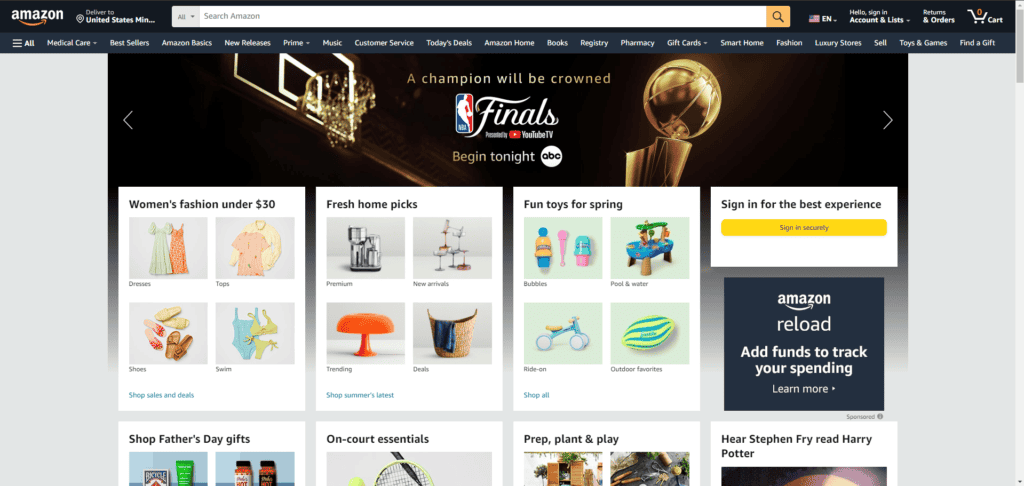
Amazon’s third-party marketplace business model is the secret sauce behind its enormous success. By opening its doors to outside sellers, Amazon has created an unparalleled shopping experience, offering various products at competitive prices.
As more sellers join the platform, buyers reap the benefits, and the growth cycle continues to spiral upward.
Airbnb's Peer-to-Peer Model
Airbnb has completely disrupted the travel industry with its peer-to-peer model. Instead of booking a hotel room, travelers can now rent a spare room (or an entire home) directly from a local host.
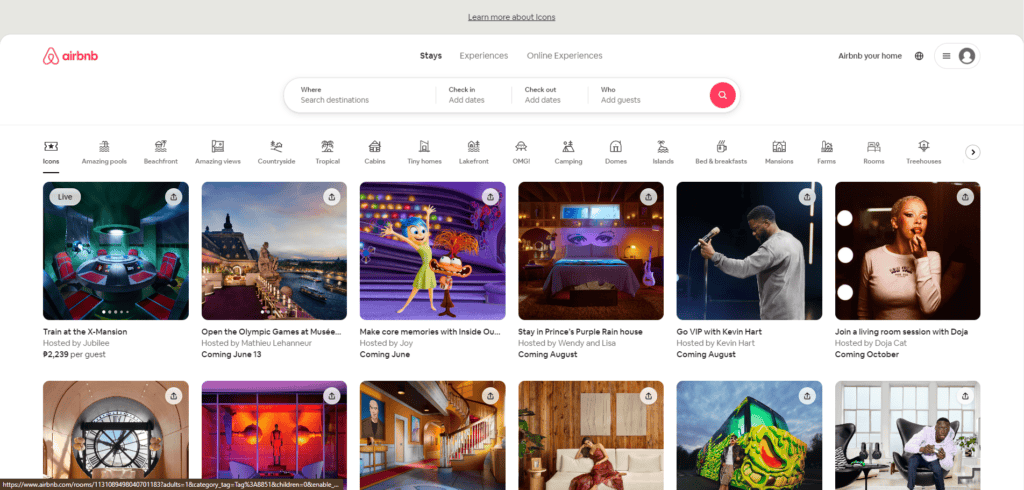
Airbnb’s seamless booking experience has opened the floodgates to a vast new pool of travel accommodations. With each new host and guest on board, the platform’s value multiplies for everyone involved.
Apple's Ecosystem Approach
Apple has managed to weave a tight-knit network of products and services that effortlessly play together. The result? A fiercely loyal customer base hooked on their iPhones, iPads, Macs, Apple Watches, and Apple TVs.

Once you buy into the Apple ecosystem, it’s hard to leave. Everything just works together so seamlessly. And with each new product or service, the value of the ecosystem increases for users. It’s a powerful model that has helped Apple become one of the most valuable companies in the world.
Uber's Two-Sided Platform
Uber is the quintessential two-sided platform. On one side, riders are looking for a convenient way to get from A to B, and drivers are looking to earn extra cash.
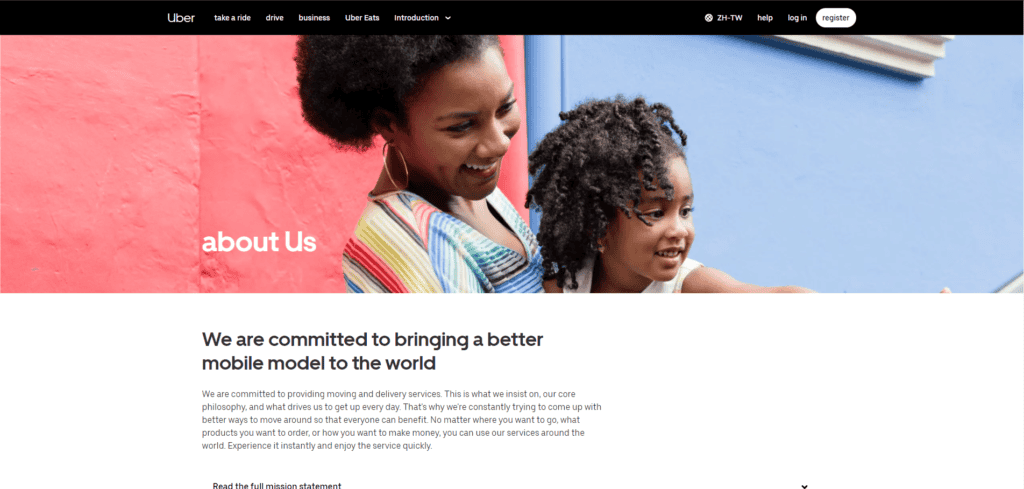
The magic happens when Uber connects riders and drivers in a single, fluid motion. As the community grows, so does the network effect, making the platform an unstoppable force redefining the transportation industry.
Spotify's Freemium Subscription Model
With its innovative freemium business model, Spotify has transformed the music industry. Now, users can choose between free music with ads or a monthly subscription for an ad-free experience with added perks.
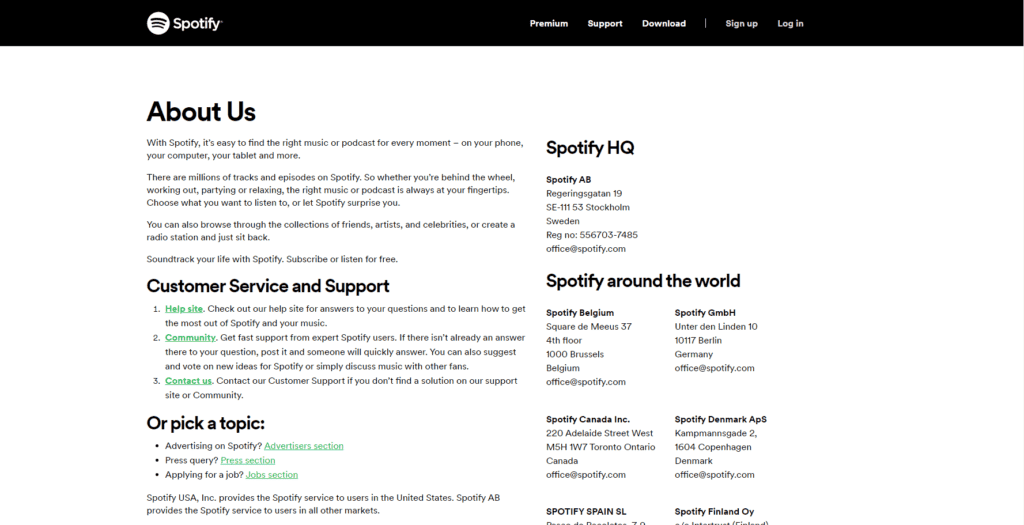
With its free tier, Spotify has cultivated a massive user base, gathering priceless intel on how people consume music. By converting some of these users into paying customers, the company has crafted a robust subscription business model examples that pays dividends for artists, labels, and music lovers.
Looking at the diverse range of business models out there, it’s clear that there’s no one-size-fits-all solution. Your target customer is the key to finding the right model that aligns with your business goals.
However, all these successful common business models put the customer first. Whether it’s through convenience, selection, seamless experiences, or personalized service, the businesses that win are the ones that relentlessly focus on creating value for their users.
As you reflect on your business model examples, consider what you can do to add value to your customers’ lives. What pain points can you alleviate, making their days easier, brighter, or more fulfilling? Answer those questions, and you’ll be well on your way to building a thriving, sustainable business that resonates with people.
Dario's Experience
We’ve explored some of the most powerful business model examples, from subscription-based services business to freemium offerings. These strategies have been the driving force behind some of the world’s most successful companies, and for good reason.
A successful business model is about more than just turning a profit. It’s about crafting an operation that resonates with your customers, grows sustainably, and leaves a positive mark on the world. When you nail your business model, the rest of your strategy falls into place.
Create your playbook by building upon business model examples. With your unique voice and unbridled enthusiasm, you’ve got the power to inspire a movement. Don’t hold back – unleash your potential!
Frequently Asked Questions
The most common business models include e-commerce, subscription-based, freemium, and marketplace models. Each of these models has unique characteristics and is suited for different types of businesses.
Selecting the right business model involves understanding your target market, the problem your product/service solves, and how you plan to generate revenue. Consider factors like scalability, customer acquisition, and market trends.
Yes, some businesses successfully implement hybrid models, combining elements of different business strategies to maximize revenue streams and adapt to market demands.
The lean startup model focuses on developing products with minimal resources, testing them quickly in the market, and iterating based on feedback. It emphasizes learning and adapting over extensive upfront planning.
Understanding various business models helps entrepreneurs innovate, adapt to market changes, and choose the most effective way to monetize their products or services. It also provides insight into competitors’ strategies.



